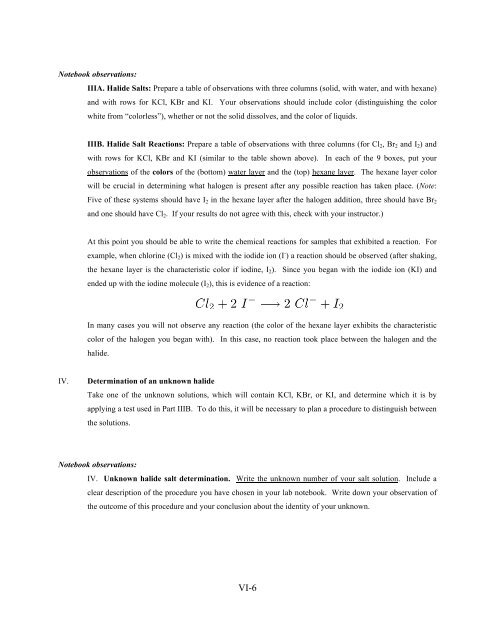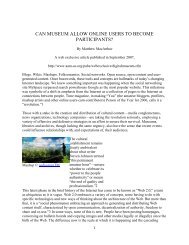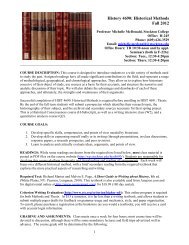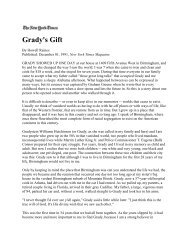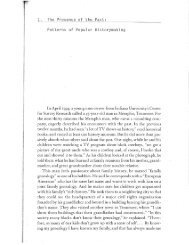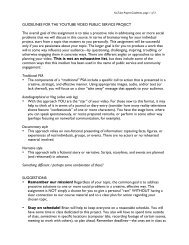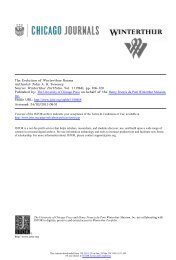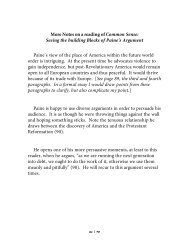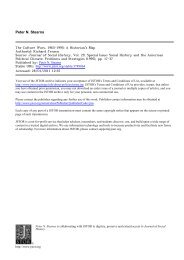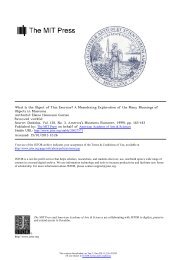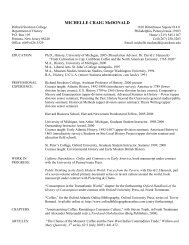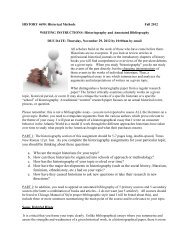VI-1 Chem 2115 Experiment # 6 PERIODIC RELATIONSHIPS
VI-1 Chem 2115 Experiment # 6 PERIODIC RELATIONSHIPS
VI-1 Chem 2115 Experiment # 6 PERIODIC RELATIONSHIPS
You also want an ePaper? Increase the reach of your titles
YUMPU automatically turns print PDFs into web optimized ePapers that Google loves.
Notebook observations:<br />
IIIA. Halide Salts: Prepare a table of observations with three columns (solid, with water, and with hexane)<br />
and with rows for KCl, KBr and KI. Your observations should include color (distinguishing the color<br />
white from “colorless”), whether or not the solid dissolves, and the color of liquids.<br />
IIIB. Halide Salt Reactions: Prepare a table of observations with three columns (for Cl2, Br2 and I2) and<br />
with rows for KCl, KBr and KI (similar to the table shown above). In each of the 9 boxes, put your<br />
observations of the colors of the (bottom) water layer and the (top) hexane layer. The hexane layer color<br />
will be crucial in determining what halogen is present after any possible reaction has taken place. (Note:<br />
Five of these systems should have I2 in the hexane layer after the halogen addition, three should have Br2<br />
and one should have Cl2. If your results do not agree with this, check with your instructor.)<br />
At this point you should be able to write the chemical reactions for samples that exhibited a reaction. For<br />
example, when chlorine (Cl2) is mixed with the iodide ion (I - ) a reaction should be observed (after shaking,<br />
the hexane layer is the characteristic color if iodine, I2). Since you began with the iodide ion (KI) and<br />
ended up with the iodine molecule (I2), this is evidence of a reaction:<br />
In many cases you will not observe any reaction (the color of the hexane layer exhibits the characteristic<br />
color of the halogen you began with). In this case, no reaction took place between the halogen and the<br />
halide.<br />
IV. Determination of an unknown halide<br />
Take one of the unknown solutions, which will contain KCl, KBr, or KI, and determine which it is by<br />
applying a test used in Part IIIB. To do this, it will be necessary to plan a procedure to distinguish between<br />
the solutions.<br />
Notebook observations:<br />
IV. Unknown halide salt determination. Write the unknown number of your salt solution. Include a<br />
clear description of the procedure you have chosen in your lab notebook. Write down your observation of<br />
the outcome of this procedure and your conclusion about the identity of your unknown.<br />
<strong>VI</strong>-6


